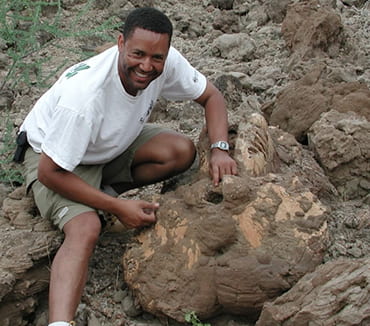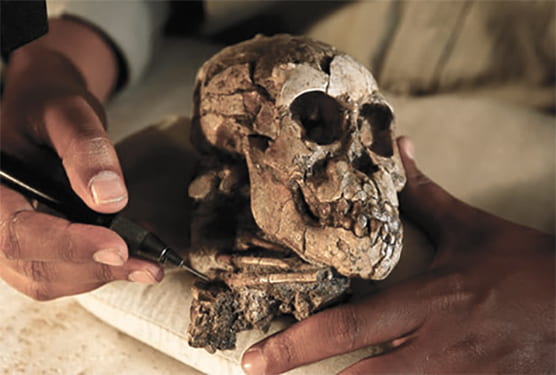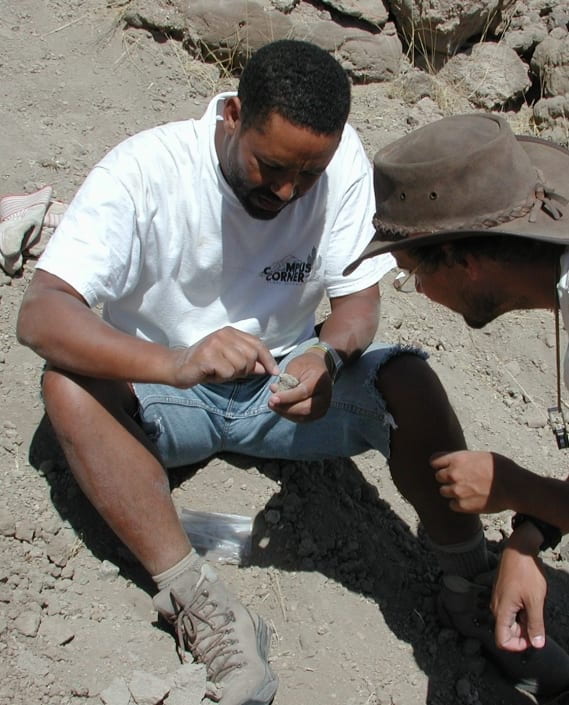About the PI
Learn more about Zeresenay "Zeray" Alemseged.
Zeresenay “Zeray” Alemseged
Principal Investigator
Donald N. Pritzker Professor
University of Chicago
Department of Organismal Biology and Anatomy
Anatomy Building
1027 E. 57th St. Room #201 Chicago, IL 60637
alemseged@uchicago.edu | 773-834-0952
CV/Resume | List of Publications
For student research involvement inquiries:
Contact our lab manager: Rebecca Van Sessen | 773-795-3695
Zeray Alemseged is a professor in the Department of Organismal Biology and Anatomy at the University of Chicago and holds the Donald N. Pritzker professorship. Prior to joining the University of Chicago, he was a Senior Curator of Anthropology at the California Academy of Sciences (CAS) in San Francisco where he held the Irvine Chair of Anthropology. He was also Adjunct Professor at the University of California Davis and a Research Professor at San Francisco State University. Before joining CAS, he was a senior scientist in the Department of Human Evolution at the Max Planck Institute for Evolutionary Anthropology in Leipzig, Germany, and a postdoctoral fellow at the Institute of Human Origins at Arizona State University based in Tempe, Arizona. He earned his PhD from the University of Paris, France, in paleoanthropology and his BSc in geology form Addis Ababa University, Ethiopia.

His broader research interests include human evolution and paleoanthropology and the exploration of the biotic and abiotic factors that shaped the evolution of humans and extinct ancestral species. To this end, he undertakes extensive fieldwork and employs cutting edge imaging techniques to investigate the evolutionary process and mechanisms that led to the emergence of Homo sapiens. He explores both the biological and cultural transformations that occurred over the past 6 millions years since humans diverged from the apes. His current research focuses on growth and development, diet and tool use in the earliest human ancestors as well as the underpinning environmental and ecological factors affecting their evolutionary trajectory. He has published extensively in peer-reviewed journals, specialized human evolution journals, and has contributed to several high-profile journals including Nature, Science and the PNAS on the subject of human evolution in Africa.


Zeray is a founder and director of the Dikika Research Project (DRP) and the Mille-Logya Project and is most well-known for his discovery of Selam, the nearly complete skeleton of a three-year-old Australopithecus afarensis, often referred to as “the world’s oldest child”. Selam represents a milestone in our understanding of hominin evolution and contributes significantly to our understanding of the biology and childhood of early species in the human lineage. Research on Selam’s scapular, vertebral and foot morphology was recently published in high profile journals, and has had far-reaching influence on our understanding of the relationship between ontogeny and locomotion in Australopithecus. Additionally, an analysis of tool-marked bones discovered by the DRP and published in Nature in 2010 has suggested that hominin tool use and meat eating began 800,000 years earlier than had previously been thought.

These and other discoveries made by Prof. Alemseged and his team have contributed significantly to our increased understanding of Africa’s natural history and its vital role as the birthplace of mankind. To engage the public with his vital research in this regard, Zeray helps develop and implement permanent and temporary exhibits on human evolution and engages the public regularly. His work has been disseminated prominently in both print and electronic media. Recently his work was featured on CNN, TED, NOVA-PBS, among hundreds of other TV, podcast and radio shows. Prof. Alemseged is the co-founder and president of the East African Association for Paleoanthropology and Paleontology (EAAPP), which brings scientists conducting research in Africa together and strives to bridge the gap between scientists and local policy makers. He is also a co-founder and leader of the African Rift Valley Research Consortium (ARVRC).
